Short Trip To The Back Country
We had an hour to kill so we took a taxi to the airport to see what the Back Country was like. We had not been there in forty years or more...

Did You Know? - In 1892, the Banning brothers purchased the island from Shatto and in 1896 built roads, installed the first telephone and wireless telegraph systems and built several tourist attractions: dance pavilions, a band stand, an aquarium, a Greek amphitheater, an inclined railway from Avalon to Lover's Cove and the Catalina Island Golf Course. Fishing expeditions, stagecoach sightseeing trips and glass-bottomed boat tours were offered on the island as well. Around the turn of the century, the island became world-renowned for sport fishing.
After a fire burned nearly one-third of Avalon in 1915, the Banning brothers sold the Island to William Wrigley Jr. Under his tutelage, the island saw many infrastructure improvements, including a power plant and reservoirs that brought fresh water to the interior of the island.

Follow the road... It was a wild ride

Great views to the mainland
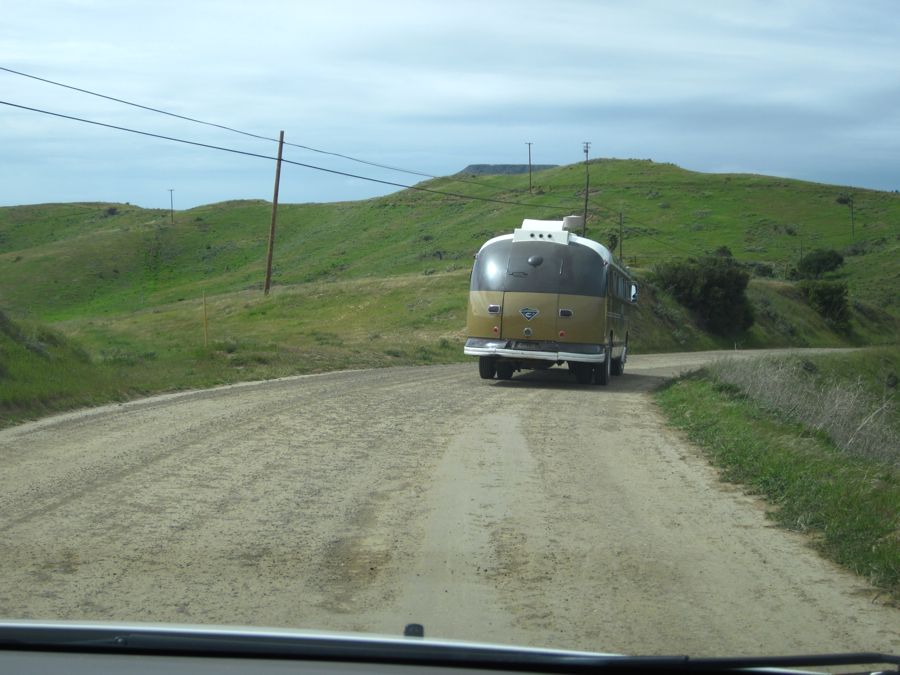
They are still running the 1950's Flexible busses
Did You Know? - The Flxible Co. (originally the Flexible Sidecar Company) was a motorcycle sidecar, funeral car, ambulance, intercity coach and transit bus manufacturing company based in the United States that was founded in 1913, and which closed in 1996.
In 1913, Hugo H. Young and Carl F. Dudte founded the Flexible Sidecar Co. in Loudonville, Ohio, to manufacture motorcycle sidecars with a flexible mounting to the motorcycle. The flexible mounting allowed the sidecar to lean on corners along with the motorcycle, and was based on a design patented by Young.
In 1919, the company's name was changed to The Flxible Co. (still pronounced "flexible") so that the name could be registered as a trademark.
After low-priced automobiles became available in the 1920s, the motorcycle sidecar demand dropped and in 1924, Flxible turned to production of funeral cars (hearses), and ambulances, which were primarily manufactured on Buick chassis, but also occasionally on Studebaker, Cadillac and REO chassis, and intercity buses, initially (1930's and early 40's) built on GMC truck chassis, and powered with Buick Straight 8 engines.
In 1953, Flxible absorbed the bus-manufacturing portion of the Fageol Twin Coach Company, and accepted its first order for transit buses from the Chicago Transit Authority. In 1964, Flxible purchased Southern Coach Manufacturing Co. of Evergreen, Alabama and built small transit buses at the former Southern Coach factory until 1976. Flxible was purchased by Rohr Industries in 1970, and a new factory and corporate headquarters were built in Delaware, Ohio in 1974, with the original factory in Loudonville, Ohio being used to manufacture parts and sub-assemblies. Flxible was sold to Grumman Corporation in 1978 and became known as Grumman Flxible. The name reverted to Flxible when Grumman sold the company in 1983 to General Automotive Corporation. In 1996, Flxible declared bankruptcy and its assets were auctioned.
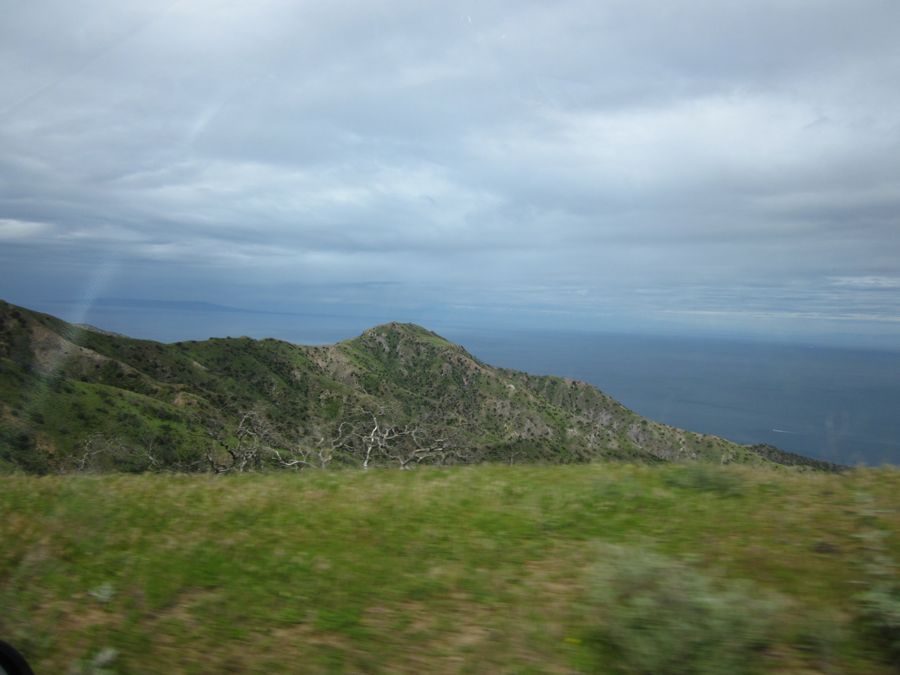
The deer stay on the mountains as long as the grass is relatively green


The road is pretty good along this stretch

The rain is coming our way
We Made It To The Airport In The Sky
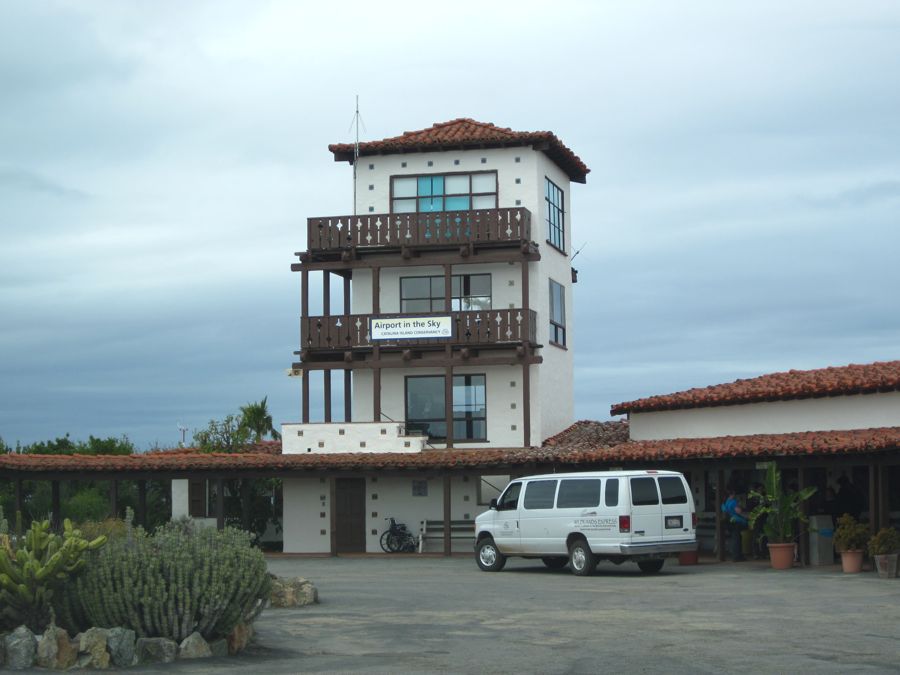
Arrival... 1600 feet in the sky
Did You Know? - Catalina Airport (IATA: CIB, ICAO: KAVX, FAA LID: AVX) is a privately-owned airport located six miles (10 km) northwest of the central business district of Avalon, California[1] in the middle of Catalina Island. The airport is open to the public and allows general aviation aircraft to land there. The only requirement is that inbound pilots state their intention to land and that they pay a $25.00 (US) landing fee. The airport is primarily used for general aviation. The airport is also used for airfreight from the mainland. Supplies for the island are delivered via Douglas DC-3 aircraft daily. There are no scheduled passenger flights to or from the airport. It is also known as the Airport in the Sky due to the fact it lies near the island's highest point at an elevation of 1,602 ft (488 m) All roads to the airport from the island's population centers climb steeply upward.
Although most U.S. airports use the same three-letter location identifier for the FAA and IATA, Catalina Airport is assigned AVX by the FAA and CIB by the IATA. The airport's ICAO identifier is KAVX.
There is a restaurant at the airport, the DC-3 Gifts and Grill (http://www.catalinadc3.com), and for private pilots in the Los Angeles area, the airport is one local choice for a $100 Hamburger (aviation slang for a private general aviation flight for the sole purpose of dining at a non-local airport). Buffalo burgers are the house specialty. The restaurant and airport is also a stop on some of the tours of the interior of Catalina Island from Avalon.
The airport originally opened as "Buffalo Springs Airport" in the late 1930s and was made by leveling off the top of a hill. Scheduled passenger service was briefly provided by United Airlines in DC-3s; long-disused refueling equipment is located in the pavement in front of the terminal building; no fuel currently available. The Wrigley family - who owned Santa Catalina Island for decades - used to keep their DC-3 in the large hangar at the airport.

Used to house a DC-3

Did You Know? - The amenities of the DC-3 and DST popularized air travel in the United States. With only three refuelling stops, eastbound transcontinental flights across the U.S. taking approximately 15 hours became possible. Westbound trips took 17 hours 30 minutes because of typical prevailing headwinds — still a significant improvement over the competing Boeing 247. During an earlier era, such a trip would entail short hops in slower and shorter range aircraft during the day, coupled with train travel overnight.
[4] A variety of engines were fitted to the DC-3 throughout the course of its development. The original civilian aircraft used Wright R-1820 Cyclone 9s, but later aircraft (and the majority of military aircraft) used the Pratt & Whitney R-1830 Twin Wasp radial which offered better high-altitude and single engine performance. In 1950 three DC-3S Super DC-3s with Pratt & Whitney R-2000 radials were built.
Total production of the DC-3 was 16,079. More than 400 remained in commercial service in 1998.

The busses were re-engined a few years back according to our taxi driver, Al

Hamilton Cove

Saddleback 28 miles distant

The reservoir provides for the city of Avalon... It is covered to prevent evaporation
Did You Know? - The Wrigley Reservoir is the main treated-water reservoir on Santa Catalina Island, Calif. (Catalina Island). Located on the mountain above the town of Avalon, the reservoir provides potable water to the town and other parts of the island.
In 2006, the job was to replace an existing liner and cover on the Wrigley Reservoir. The project included 120,000ft2 of 45-mil potable water grade Hypalon® for the liner and a similar amount for a floating cover. The liner and cover system were designed according to the Reservoir Floating Cover Guidelines published by the California/Nevada Section of the American Waterworks Association (AWWA, 1999).
Early in 2006, fabrication of the liner and cover for the reservoir commenced. As part of the ISO 9001 quality program, an inspection of the manufacturer’s facilities in San Jose, Calif. was conducted, and it fully met all requirements.
From there the material went to the fabrication shop, which at the time was in Hollister, Calif. Panels were welded to the custom sizes needed to fit the panel layout of Wrigley Reservoir.
Two interesting aspects about the fabrication process stand out. The first was that 3-in.-wide welds were used for all welding on these panels. The 3-in.-wide weld extended to the edge of the top panel, effectively welding down the edge and eliminating a flap on the surface.
The second was that these panels were rolled up, without folds, on rolls that were 34ft wide. The fabrication shop used a 36-ft-wide winder that allows the creation of fabricated cover panels without folds. These rolled panels were then wrapped and shipped to the project site

A damned lake provides for the wildlife (NOT the drinkers!)
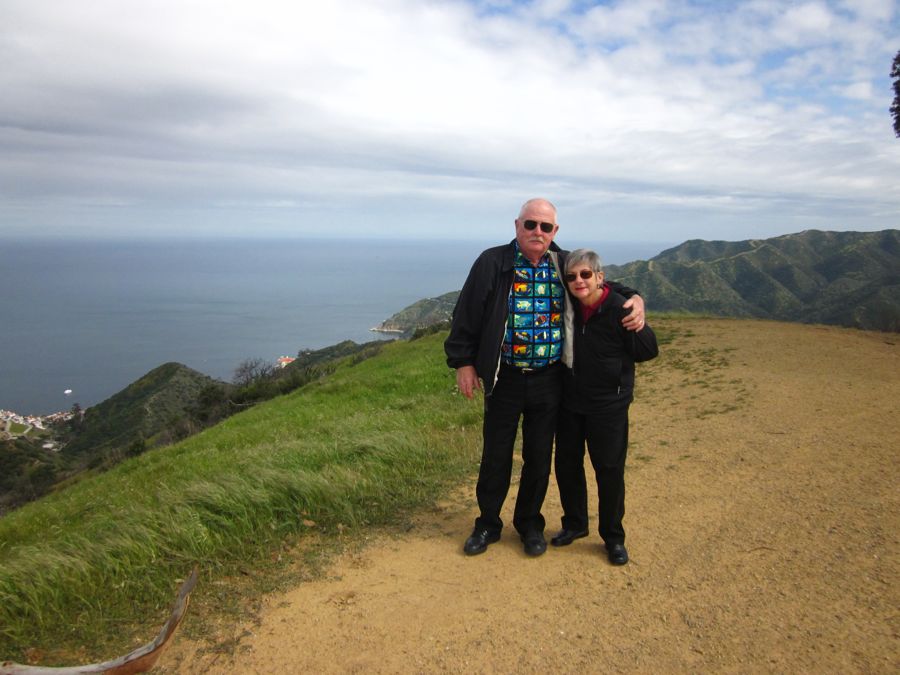
Hang on... It's a wild ride down


This was a stagecoach road... Kept unkept on purpose... Slows everyone down
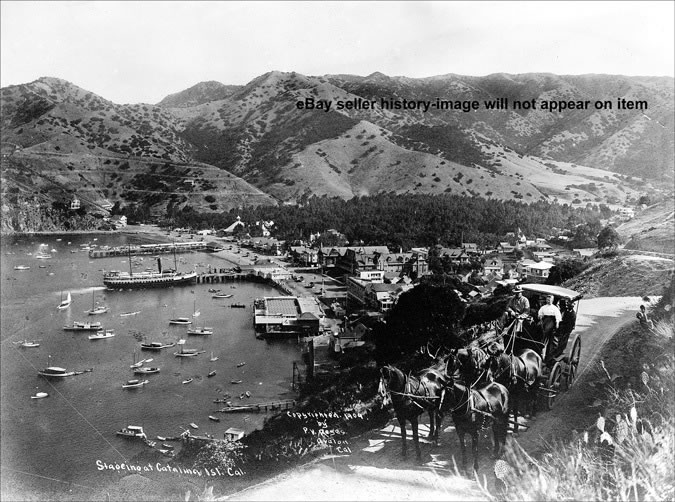
The real thing... 1909

Same road as today

Avalon looks small from 1000 feet higher

Hikers can be found anywhere
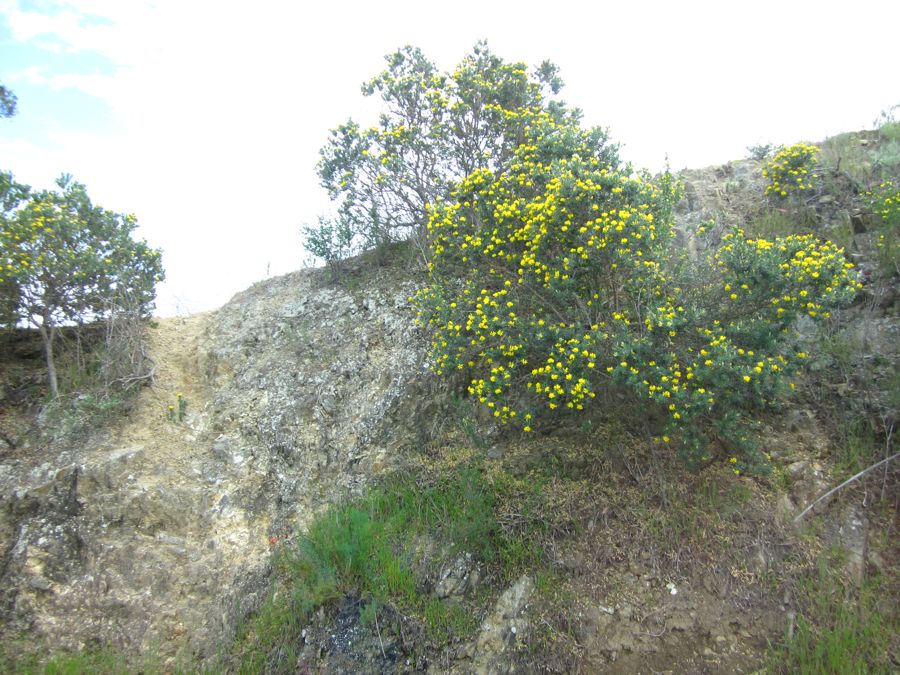
Wild flowers abound
... Not natural to the island
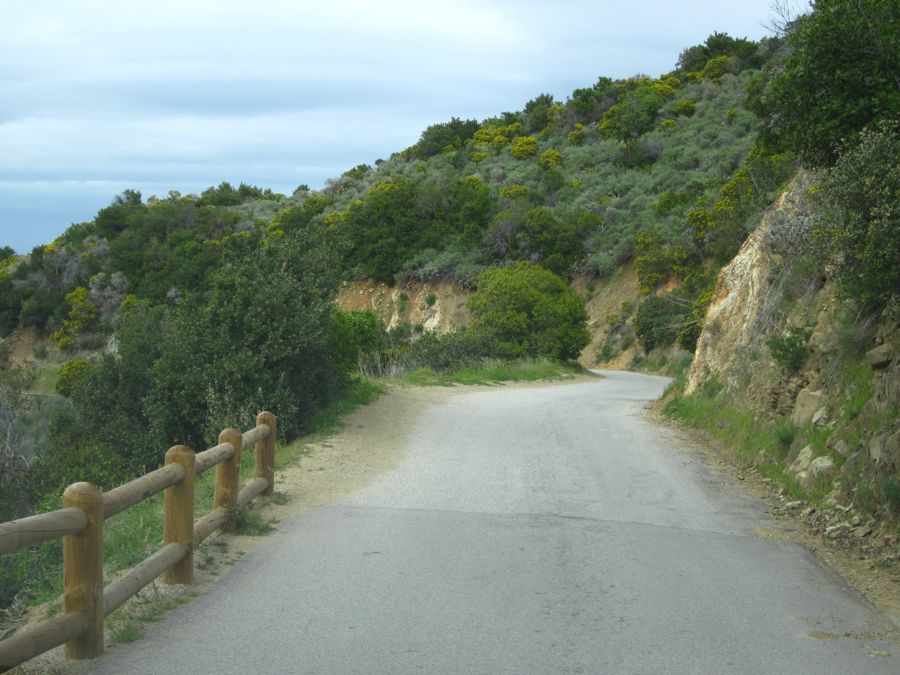
Hang on Mr. Toad
... It's a wild ride
Did You Know? - Mr. Toad's Wild Ride is a dark ride at Disneyland Park. It is one of the few remaining attractions that was operational on the park's opening day in 1955. The ride's story is based on Disney's adaptation of The Wind in the Willows, one of the two segments of the film The Adventures of Ichabod and Mr. Toad. It was once an attraction at the Magic Kingdom park in Walt Disney World, but despite a long protest against its closure, Mr. Toad's journeys to nowhere in particular were put to an end in 1998 and the ride was replaced the following year with The Many Adventures of Winnie the Pooh.

Hanging in I am

Screeeeeech....
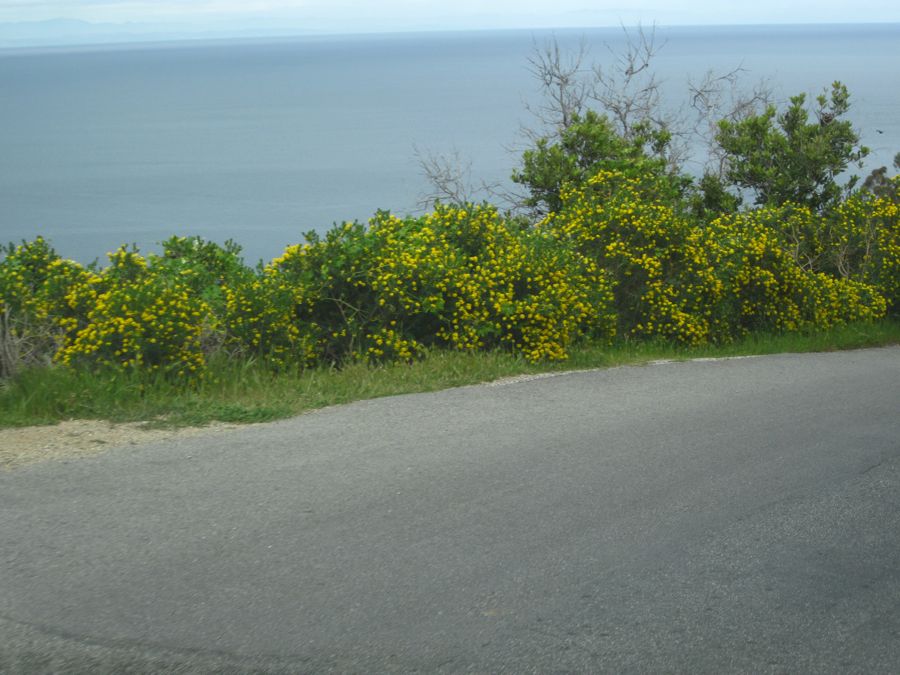
Wild flowers were everywhere
We Made It Down The Mountain... Time For A Drinkie

We made it with 10 minutes to spare

Our ride home
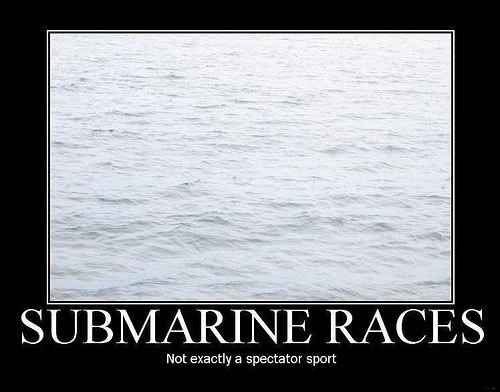

Ah... We can already hear dance music
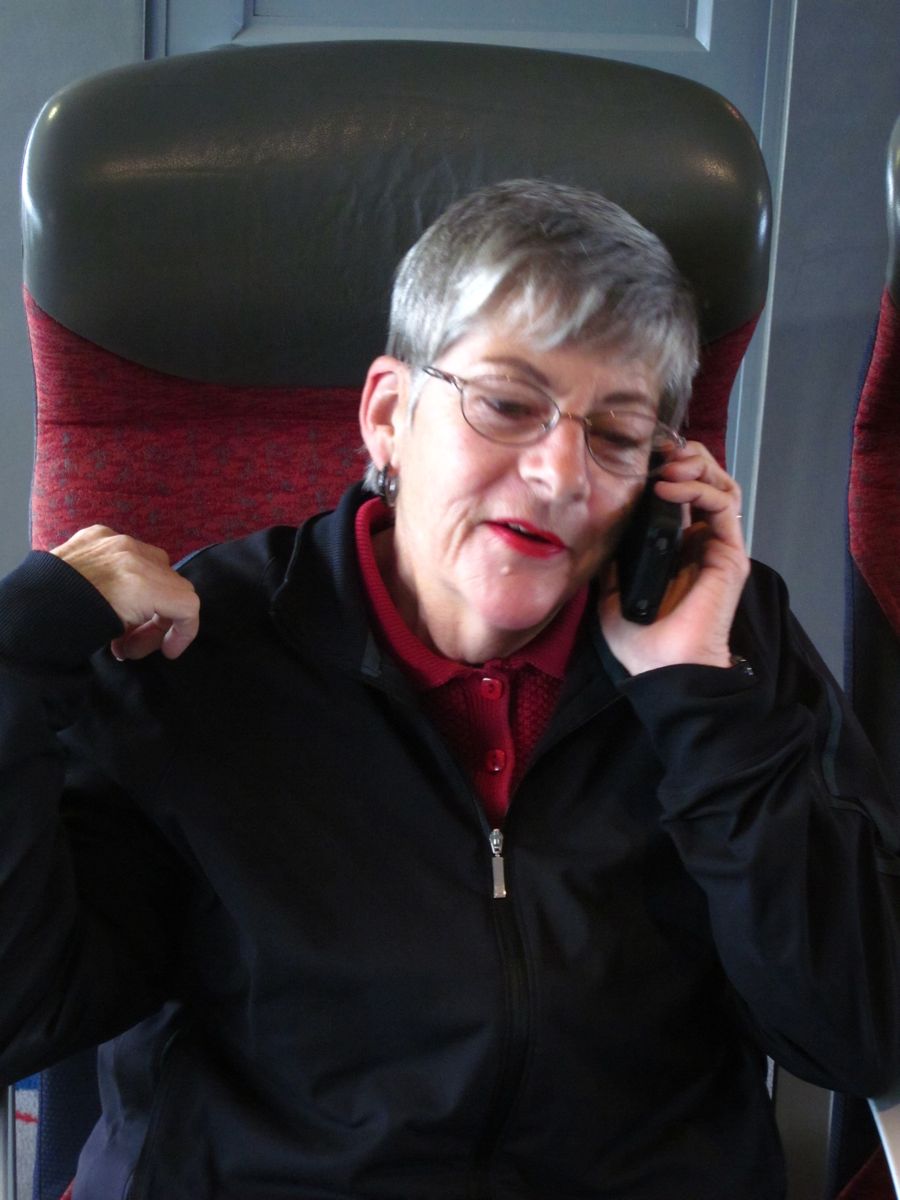
Civilization

It began to rain on the way home... We made it safely

We needed the rain to stay away and it did until about 5:30 or so

Head for home after a quick stop by Old Ranch
We Stopped By For A Drink And Bunnaford, Charlotte, and Tom Joined Us

Tom was still playing the Beatle tunes after this weekends visit to Cerritos
